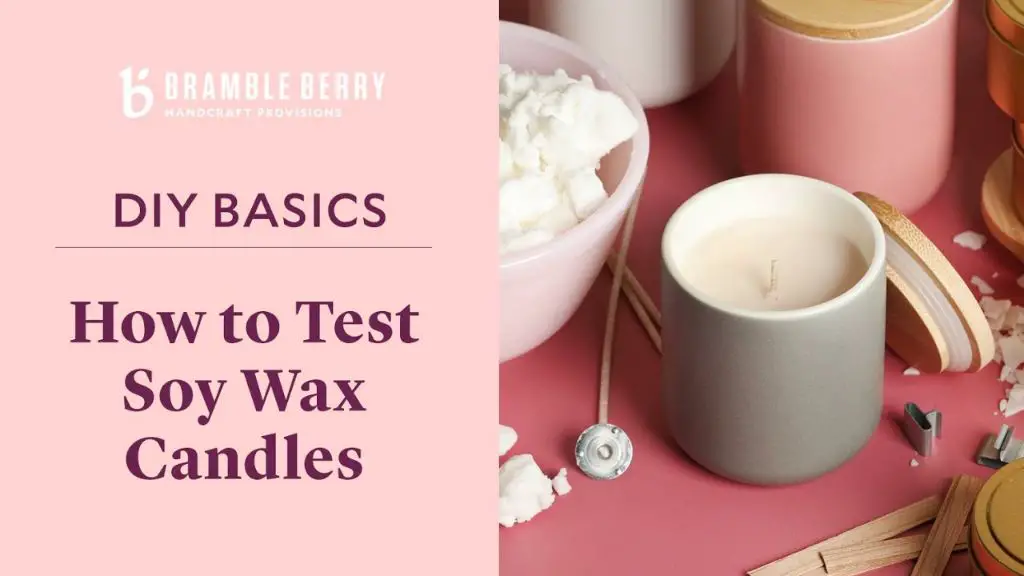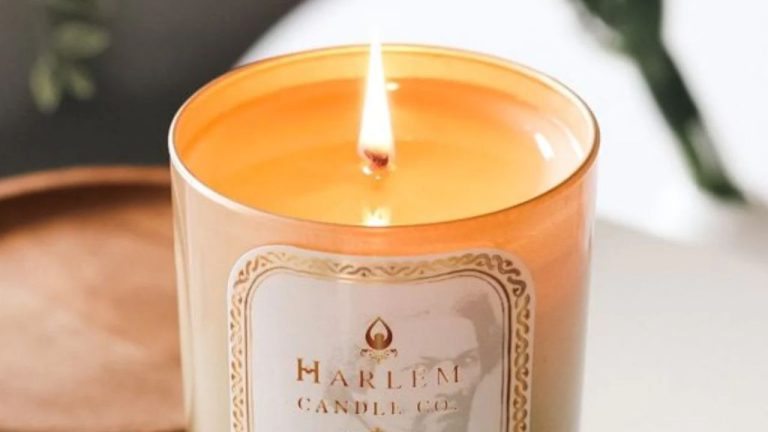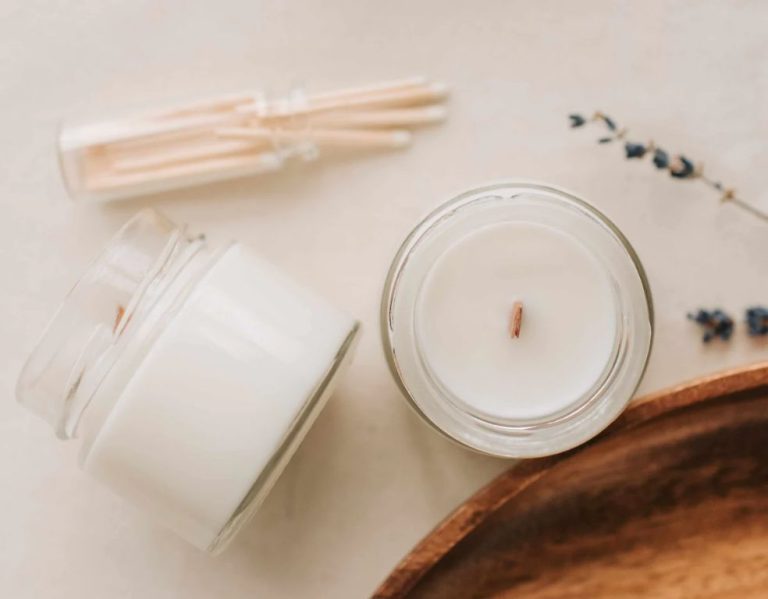What Is The Best Soy Wax To Use To Make Candles?
Intro
Soy wax is a vegetable-based wax made from soybean oil. It is commonly used to make candles because of its many benefits compared to paraffin wax. Soy wax is made from a renewable resource, biodegrades more quickly, and burns cleaner than paraffin wax.
This article will provide an overview of the best soy waxes to use for candle making. We will compare different types of soy wax, looking at important factors like melting point, scent throw, texture, and ease of use. We will also cover how to blend soy wax with additives and other waxes. With the information in this guide, you’ll be able to select the right soy wax for your candle making needs.
Pros and Cons of Soy Wax
Soy wax has become a popular alternative to paraffin wax for candle making. Soy wax offers several benefits, but also has some drawbacks to consider.
Some key pros of using soy wax include:
- Soy wax is a renewable and sustainable resource, since it is made from soybeans. Many candle makers and consumers like that it comes from a plant-based source (source).
- Soy wax burns cleaner than paraffin wax, producing less soot and smoke. This makes soy candles better for indoor air quality (source).
- Soy wax is biodegradable and considered eco-friendly. Soy wax leftovers can safely go in the trash rather than contaminating the environment.
- The natural texture of soy wax allows for container candles with a smooth, creamy surface.
However, soy wax also has some drawbacks including:
- Soy wax does not hold fragrance oils as well as paraffin wax. Soy candles may have lighter scents that don’t last as long (source).
- The wax can shrink and expand a lot compared to paraffin, leading to issues like frosting, sweating, and cracking. Proper wax preparation and vessel choice can help minimize this.
- Soy wax is generally more expensive than paraffin wax. However, many customers are willing to pay more for its natural properties.
Overall, soy wax can be a great candle-making choice for makers who value sustainability and want candles with a softer, more muted scent. But extra care may be needed to prevent cosmetic issues caused by shrinkage and expansion of the wax.
Types of Soy Wax
There are three main types of soy wax used for candle making: natural, hydrogenated, and blended waxes.
Natural soy wax is made from hydrogenated soybean oil. It has a lower melting point compared to paraffin wax, so it’s better for containers and votives than pillars or tapers. Natural soy wax allows for good scent throw and creates a smooth surface when poured correctly. Popular natural soy wax brands include Golden Natural Soy Wax and EcoSoya Q210 (according to https://lonestarcandlesupply.com/choosing-a-soy-wax/).
Hydrogenated soy wax has undergone additional chemical processing to increase its melting point. This makes it better suited for pillars and tapers. Hydrogenated soy wax is harder than natural soy yet still allows scent to throw well. EcoSoya PB and American Soy Organics Freedom are examples of hydrogenated soy waxes.
Blended waxes mix soy wax with other waxes like paraffin or beeswax. Blending improves soy’s performance by modifying its melting point, hardness, and burn capabilities. Popular blended waxes are CandleScience’s Soy-Para-Soy and Golden’s Soy & Beeswax blend.
Soy Wax Melting Point
Soy wax has a low melting point compared to other waxes, which is a key factor when selecting wax for candle making. Low-melt soy wax melts at temperatures between 115-135°F, while high-melt soy wax melts between 135-150°F according to sources like Blended Waxes.
The melting point affects how the wax performs. Soy wax with a lower melting point will be softer and allow for better scent throw. However, lower melt point also means the wax may not retain its shape as well when warm. A higher melting point soy wax will hold its shape better when burning, but may not release fragrance as strongly.
Most soy wax used for container candles has a melting point around 125°F, providing a balance of good scent throw and shape retention. For pillars, votives, and tarts, a slightly higher melt point closer to 135°F may be preferred. Knowing the intended use will help determine the ideal melting point.
Overall, soy wax offers a lower melting temperature than paraffin or beeswax, resulting in a smooth appearance and making it easier to work with. But the exact melting point range still varies between soy wax types and blends.
Soy Wax Fragrance Load
The fragrance load refers to the amount of fragrance oil that can be added to soy wax before negatively impacting the performance of the candle. Soy wax can hold between 6-10% fragrance oil by weight.1 Exceeding the recommended fragrance load can lead to issues like wet spots, poor scent throw, and tunneling.
Most candle makers recommend staying on the lower end of the range, around 6-8% fragrance load, for optimal results.2 This allows for good fragrance retention and throw without compromising the burn performance. A fragrance load around 6-7% is ideal for achieving an even melt pool and clean burn down to the bottom.

When adding fragrance oil, it’s important to mix thoroughly to fully incorporate the oil into the wax. Insufficient mixing can lead to poor scent throw. Slowly pour the fragrance into the wax while stirring constantly. Continue mixing for 2-5 minutes after adding to fully bind the fragrance with the wax.
In summary, a fragrance load of 6-8% is recommended for soy candles to allow for good scent throw without sacrificing burn quality. Thorough mixing and blending is crucial for binding the fragrance oil with the wax.
Soy Wax Texture
Soy wax has a smooth, creamy texture that is aesthetically pleasing in candles. The smooth surface provides a nice finish for the candle and allows for even wax pooling and burning (noybcandles.com).
Unlike paraffin wax which can develop rough spots, soy wax remains smooth from pour to finish. The velvety texture comes from the natural soy waxes and vegetable additives. This gives candles a clean, attractive appearance.
The smooth soy wax texture also impacts the wax pool during burning. The wax melts evenly across the entire surface. With consistent texture, the melt pool is less likely to tunnel or have an irregular shape.
For the best results, look for soy wax designed for containers and melts. The smooth formula will give your candles a flawless finish from top to bottom.
Best Soy Wax Brands
When it comes to the best brand of soy wax for candle making, some top choices include Golden Brands, Cargill, NatureWax, and EcoSoya.
Golden Brands is one of the most popular soy wax brands due to their high quality and reliable performance. Their 444 soy wax is a blend that offers excellent scent throw and an ideal melting point for candles. It’s easy to work with and gives candles a smooth finish.
Cargill is another leading brand, known for their natural, 100% soy wax. Their Cargill C3 and C6 waxes provide good scent saturation and clean burning. They are a bit more expensive but work well for complex candle designs.
NatureWax offers both 100% natural soy waxes and blended options like NW-930 and NW-935. These are very versatile waxes that make strong scent throw and glossy candles. NatureWax also has good customer support.
For 100% soy, EcoSoya waxes are top performers. Their Pillar blend offers excellent scent throw and finish for candles. Their waxes provide clean burning and give candles a nice sheen when cooled.
When comparing top brands, factors like scent throw, ease of use, melting point, and price should be considered. Testing different waxes with your preferred fragrance oils can help determine the best match for your candle making needs.
Blending Soy Wax
Many candle makers choose to blend soy wax with other waxes like paraffin or palm to achieve desired properties. Blending waxes allows you to customize the burn, scent throw, color vibrancy and more. Popular blends include:
Soy-paraffin blends: Adding paraffin wax to soy wax makes the wax harder and improves burn quality. A common ratio is 80% soy wax to 20% paraffin. This blend from The Flaming Candle is a popular soy-paraffin blend.
Soy-palm blends: Palm wax helps make soy candles harder and smoother when blended. Blend ratios are typically 90% soy wax to 10% palm wax. Palm can help improve scent throw as well.
When blending waxes, it’s generally best to melt each component separately, combine, and stir thoroughly before pouring candles. Testing different blend ratios will allow you to find the optimal mix for your needs.
Adding Additives
Additives can be added to soy wax to modify the properties and improve the performance when making candles. Some popular additives used with soy wax include:
Vybar – A proprietary polymer additive that increases the hardness and opacity of soy wax (Source: https://www.candlemakingsupplies.net/wax-additives-everything-candle-makers-need-to-know). Adding 1-3% Vybar 103 to soy wax can help reduce frosting and improve stability.
Stearic Acid – A natural fatty acid that increases hardness, opacity, and melting point of soy wax when added at 5-10%. It also helps anchor fragrance (Source: https://thecandlemakersstore.com/universal-soy-wax-additive.html).
Paraffin Wax – Adding a small amount (5-10%) of paraffin wax to soy wax can increase the melting point, hardness, and opacity. This helps reduce frosting and makes soy wax easier to work with.
Microcrystalline Wax – Increases the melting point of soy wax resulting in a smoother appearance and stronger scent throw. Recommended usage is 5-15%.
Beeswax – Natural additive that makes soy wax harder and more opaque. It also helps anchor scent. Add 5-15% to soy wax.
Vybar and stearic acid are popular soy wax additives that help harden the wax and reduce frosting. Small amounts of paraffin, microcrystalline wax, and beeswax can also modify soy wax properties. When adding additives, carefully test blends to achieve desired results.
Tips for Working with Soy
When working with soy wax, it’s important to follow some best practices to end up with high quality candles. Here are some tips for working with soy wax:
Always use a double boiler or a melter to melt soy wax. This allows the wax to melt evenly and prevents overheating, which can scorch the wax. Heat the wax to 185-190°F. Overheating the wax can cause frosting or creates separating in the candle.
Add fragrance oil when the wax has cooled to around 130-140°F to help with binding. The lower temperature allows the soy wax to absorb more scent. Use 6-8% fragrance for pillars and 10-12% for containers. Too little fragrance may lead to poor smell throw.
Avoid moisture to prevent frosting. Always melt and pour wax in a dry area. Store wax in an airtight container. Humidity can cause frosting on the tops of candles.
Mix wax from different manufacturers rather than using a single wax for best results. Blending creates a wax with balanced properties. Common blends are 60% 464 soy wax with 40% 6006 soy wax.
Cool candles slowly to reduce sinkholes and cracks. Allow candles to solidify undisturbed for at least 24 hours before moving or burning them. Fast cooling can result in a brittle candle with cracks and holes.
Additives like vybar or parasoy can help make soy wax harder for better glass adhesion and texture. Use 3-5% of additive by weight. Too much additive may reduce hot and cold scent throw.






